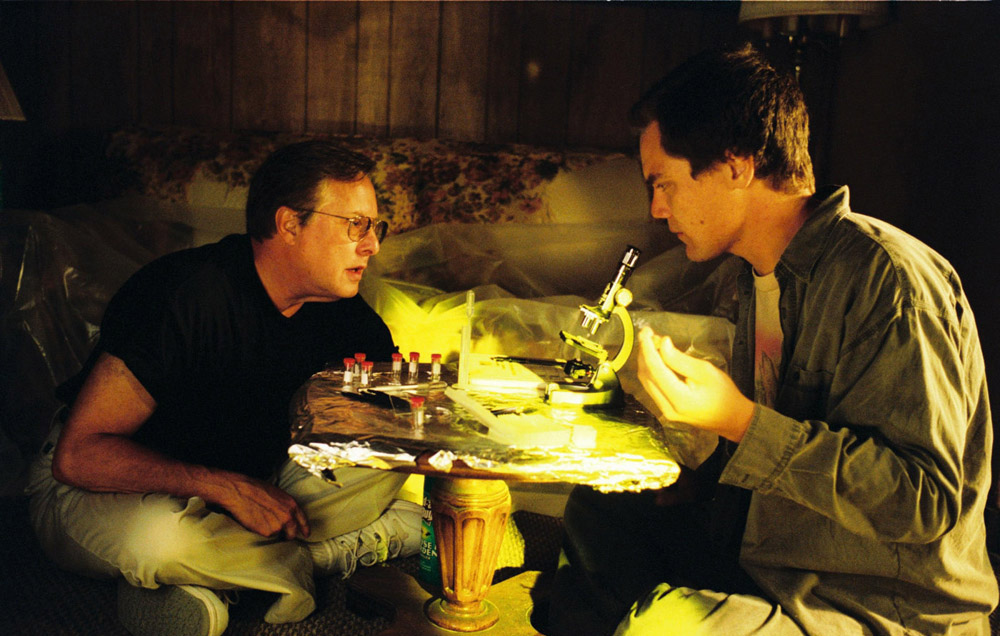“He’s such a fun person to be around. He’s just kind of your fun uncle — he’s just got stories for days and he’s literally been involved in some of the great movies of the twentieth century,” Michael Shannon told me of working with William Friedkin in 2005, shortly after production wrapped on “Bug,” an adaptation of Tracy Letts’ darkly comic play. “Based on the work he’s done, this is such a kind of a natural thing for him to be doing, It’s a real culmination of different parts of things that he’s done, from the horror of ‘The Exorcist,’ but also the comedy. And he knew that I was very nervous — even though I had done the play several times, but I don’t walk around starring in movies all the time — so he really took care of me and watched out for me… and then when I started getting a little too comfortable, he made sure that didn’t happen either.”
That last part was roughly how I myself felt when getting to talk to Friedkin for what was to be a short sneak preview piece for Premiere Magazine. I was still in college, having returned to Austin after an internship at the magazine in Los Angeles, and I had been somewhat prepared, not in the sense that you ever could be to talk to someone with the resume that Friedkin had, but at least in his temperament since only a few months earlier seen “The Hunted,” with the director in attendance at the Alamo Drafthouse where a Q & A that was likely supposed to last only a half-hour at most stretched well into the night, suffering no fools as he challenged and delighted the audience in equal measure. It was actually slightly reassuring beforehand to know that the end result of our interview would be cut down to a 300-word piece when I knew there would surely be a juicy anecdote in the limited time I could expect to have with Friedkin, but he made it clear moments in, there were going to be no limits placed on the conversation in terms of either time or subject, making this all the more thrilling and intimidating all at once.
Having seen Friedkin at many retrospective screenings before and since, I always marveled at how despite he was now likely greeted with a standing ovation any time he walked into a movie theater, he made sure anyone he spoke to was on equal footing in spite of the vast experience and fierce intellect he had, taking even the silliest questions and somehow spinning them within some historical context to make a point. He may have been regarded as a legend by then, but it wasn’t a role he readily embraced when it would suggest his best days were behind him and in conversation, he seemed loathe to lean on experience as reason for his authority when other ways in which he could win an argument were so much more appealing.
At the time of this interview, it might’ve seemed like the end of an era for Friedkin. “The Hunted,” a ferociously entertaining survival thriller, was his last studio film and his deal at Paramount had expired around the same time his wife Sherry Lansing would leave her post at the top of the studio, but it can be seen clearly now as the start of a creative renaissance that would not only involve moving towards the independent space to make films, but dabbling in documentaries as he did starting out and directing for the stage, both theater and opera, and although a tonal tightrope act like “Bug” may only work because of the skill that Friedkin had built up over decades in the industry, it is the kind of film that usually only someone starting out might have the audacity to make, thinking they have nothing to lose.
In fact, a return to his roots had to have crossed Friedkin’s mind in optioning “Bug,” when his interest in Letts stemmed from their shared background in Chicago where the playwright and actor had made a name for himself at the Steppenwolf Theater, but was only starting to gain greater attention beyond. Yet there are clearly other reasons for their bond, which extended to an adaptation of Letts’ first play, the outrageous “Killer Joe,” and staging “Man from Nebraska” at the South Coast Repertory Theatre around the same he made “Bug,” clearly enjoying the chance to expose the surprisingly thin veneer of civility that keeps humans from being seen as any different from their animal counterparts when push comes to shove.
While Letts’ early work could be dismissed as hopelessly bleak, Friedkin saw the humor in it, particularly the story of Peter Evans (Shannon), an increasingly paranoid Iraq War veteran whose offer to shelter a woman fleeing an abusive relationship (Ashley Judd) in his motel room seems potentially just as dangerous when he believes the room is infested with insects, and if the director had the right temperament to take on the material without compromising Letts’ wonderfully acidic sensibilities, he also had the fortitude to swat away calls for a bigger name to play Peter when Shannon, who had originated the part in 1996, had only had small supporting roles in movies. None of us would know what the final film would look like when I caught up with the two in the fall of 2005 – the film wouldn’t be mixed until a few months later and both could be relieved they got out of New Orleans shortly before Hurricane Katrina touched down – and it received a mixed response upon its release, though anything less than a polarized reaction surely would’ve disappointed Friedkin.
Looking back now, it was a lucky break in a different way than I thought at the time when this fertile period in Friedkin’s career wasn’t given as much attention as it deserved and as he spoke about debating whether to start making films digitally, his budding interest in directing operas and how getting Johnny Cash to do an uncredited introduction to “The Hunted” led to rethinking his later years, his generosity and curiosity were on full display. With his passing at 87, only weeks away from the premiere of his final film “The Caine Mutiny Court-Martial” at the Venice Film Festival, we unearthed this conversation in memory of one of the greats.
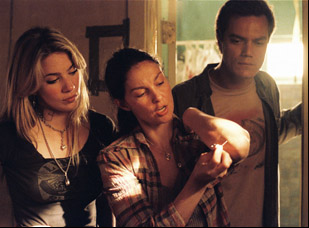
I saw it off Broadway. I had heard about it in London and heard about Tracy Letts, because we’re both from Chicago, but then I wasn’t anywhere around where his plays were being done until I got to New York this one time and I saw “Bug” off-Broadway. I thought it was an incredibly powerful and unique piece of work and then I saw it again with some friends and I started to see the possibilities of it for film. So I spoke to [Tracy] about it and he had been trying to write screenplays and had not been having much success doing it, but he liked the idea of trying to adapt it for film, so we got together and did that. Lionsgate is really the only company I went to with it, because there are very few I think that would give it the kind of attention that it needs to find the broadest possible audience.
This film would get lost at a major studio. Right now, I feel the major studios are interested in the broadest possible appeal for all their films, with the exception of the classics divisions at several of the studios, which operate independently. But to do this with a major would be to immediately consign it to DVD, because the majors are not interested in small bets. The major studios now are interested in very large bets, like going to the craps table and putting everything on a number. They would rather put all their resources on one big number, say $100 million, than have 20 films that cost $5 million. And “Bug” cost $4 million, so it’s under the radar when it comes to a major studio. They’re really not even geared up to deal with it. [And then they] will spend somewhere between $30 and $50 million just to promote it. Now, that was much different than when I started. Like “The French Connection” cost Fox $1.8 in its day, and it was $300,000 over budget. And they were very concerned about that, but they weren’t going to lose the studio if it didn’t work. There were exceptions, but for the most part, the films didn’t cost much and the studios made more of them and hedged their bets a little, but the whole distribution system has turned over completely. It’s a mass market driven, it has very little to do with any kind of individual expression now.
You’ve adapted several plays to the screen. What’s the trick to making them cinematically dynamic? “Bug” takes place entirely in a hotel room in the stage version.
It’s opened up to some extent, but basically, it’s about paranoia and it fits very much into the kind of films that I’ve made and been drawn to. A number of which have taken place largely in one room, like “Boys in the Band” and Pinter’s “The Birthday Party” and then “The Exorcist” to a great extent, took place in one room. I don’t start out being drawn to that stuff, but it seems that I am because of the limited setting and the pressure cooker atmosphere that brings out often the best and the worst in people. I think all the films that I’ve made are about the thin line between good and evil, and the constant struggle that we all have for our better angels to appear. That seems to be heightened by a claustrophobic atmosphere. So I like other films that are claustrophobic and I like the ones that I’ve made that have a kind of claustrophobia, even when it’s in the outdoors. I tend to drift towards paranoid, claustrophobic characters, probably being one myself. It must be that I understand it to the extent that it’s me.
The main thing about this that attracts me, outside of what I’ve said to you is it’s such a really good piece of writing. It really is black comedy, which is very difficult to bring off. There’s only a handful of people in the English-speaking world who have been able to bring that off. Pinter did in the ‘60s and early David Mamet, which echoed Pinter and came about because of Pinter. And Pinter came about because of Samuel Beckett. But I think Letts is a successor to that. He writes about people that you don’t normally see depicted anywhere.
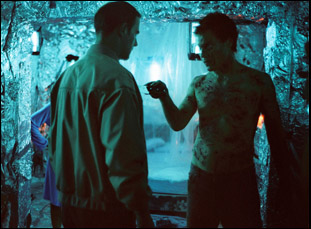
Yeah, in New Orleans. It happened to be summer vacation. And they had this enormous room, which served as both a gym and a kind of auditorium with high ceilings and very good sound. It was way the hell out in Meterie, a suburb of New Orleans, so that there wasn’t a lot of traffic. It wasn’t really in an airplane pattern. It was a very good place to build the set. And we had complete access to it and the school wasn’t abandoned, but it was on summer holiday, so we had all these offices that could be used as production offices and makeup and wardrobe rooms. We finished shooting there about two weeks before that hurricane. The day I arrived in New Orleans, a hurricane was supposed to hit and about five weeks before, it swerved and missed us. It was a big rainstorm that lasted a couple of days, but then this one hit two weeks later. It was really tragic.
In the initial announcement, it seemed you were thinking of New Mexico first?
I looked at New Mexico, but they don’t have the infrastructure for film yet. They have a very good tax credit situation. It’s as good if not better than New Orleans, but you would virtually would have to bring in everybody and then the available facilities, like that school, are not as present, so that didn’t work out for me, but probably, if they had at the time, the infrastructure, it might’ve worked better financially. And that’s a consideration when the budget of the film is $4 million. But I was very happy with that. I wouldn’t have wanted it to be more. I think films should cost a lot less today. I have no idea how it’s ballooned so far out of control — to the point where they’re no longer anything resembling personal statements. They’re just products. At that kind of price, it’s like Coca-Cola.
Is that mostly above the line costs?
All the salaries are high. Much higher than when I started. But even that doesn’t seem to explain it. Many things that explain it. Most of the films today that are made involve digital effects – the creation of whole worlds on a computer. And certainly, it’s made things possible to show that were never possible before, but it’s also vastly more expensive. To do a film on a computer is way more expensive than to do it in a room with live actors.
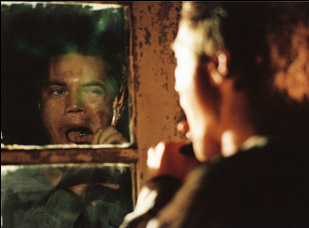
They’re real. There are no visual effects in this movie. To me, visual effects are an acquired taste. The ones that utilize backgrounds and things that you could in no way recreate on a soundstage, I think that’s amazing for films like “The Matrix” where it’s literally the creation of other worlds, that when I started you could only dream about. Those films weren’t possible. I remember there was a story that somebody had brought to me back in the ‘70s and it involved a scene in the Taj Mahal. Now, there was absolutely no way that you were going to get into the Taj Mahal, or even get permission to do a fictional film on the grounds then, so stuff like that was abandoned. Now, you could set a whole film in the Taj Mahal and people would believe it. Or in outer space or in another world. But then as I think of it, although I do value this tool of digital effects, the films that last for me are pretty much older films with no effects. Like “Singin’ in the Rain” and “Treasure of Sierra Madre” and “All About Eve” and “Citizen Kane.” There are very few contemporary films that I watch again and again and again, but that’s just me.
I get the impression that a lot of your films are going to be appreciated more later than when they initially came out — I was watching “To Live and Die in L.A.” the other night, for instance.
Well, that’s very kind of you. This we don’t know. This is up to history. Look at some of these films that have taken on new life and they were dead before DVD. I have to say that the DVD has been the greatest boon to preservation of the legacy of not only the American motion picture, but all countries. I have a vast collection of films from other countries that you can’t see anywhere in a theater. Not even in their country of origin. So DVDs are great and I also believe that probably within three years, there’ll be no more 35 millimeter projected anywhere, except in remote places where people gather to celebrate nostalgia. I really believe that digital filming is breathing down our neck, and I welcome that. That opens all the possibilities. There’s going to come a point not long [from now when] we not only will not need film, you’ll not need anyone to distribute the film. Where you can literally make a film with digital equipment and bounce it off a satellite into theaters.
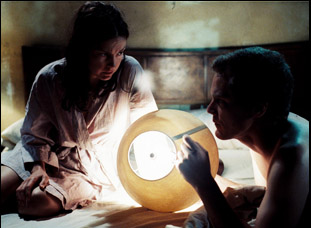
No, because I looked at the very latest in Hi-Def equipment and there were still a lot of bugs in it that I couldn’t afford. On a high budget picture, if you get a bad day with the equipment, you could lose the day and that’s just part of life. But we couldn’t really lose a day. And the cinematographer that I worked with, who’s very talented, he wasn’t conversant with it. I went down to Panavision and looked at it with him and what we saw was that the photography had a third party between the director and the cinematographer, a guy who sits there on a monitor and tunes the shot, and he’s really the guy with the ultimate control over how the shot looks, so the cinematographer and I decided we didn’t want to give the control of the image to someone else.
That’s the way it is right now, unless you go out like some of these young people do with a Sony digicam or something and then time it on the computer. But still, the professional equipment for digital photography I don’t think is right there yet for low budget filming where the look really matters. But probably as I speak that’s changing and I’m a big fan of that stuff. On the side, I’m making a documentary on my own on the restoration of a painting [Jean-Baptiste Oudry’s “Rhinoceros” and “Lion”] up at the Getty. And I go up there with a digital camera and it’s got built-in sound. I’m recording it on digital tape and in a few months, they’ll finish this work and then I’ll go out and put it together and it’ll be for sale at the Getty when they have the exhibition of this. But I’m donating it to them. It’s an exercise really to both use this new equipment and also to see if I can tell a story that way — a story that I have no control over it. It’s unfolding before me and I have to capture it.
You have a lot going on these days. You’re directing some operas as well?
Yeah, I just came back from Turin where I did “Aida” and then I’m doing two at Kennedy Center in the fall — Bartok’s “Bluebeard’s Castle” and Puccini’s “Gianni Schicchi.” And then “Salome” in Munich. I just love opera. I just love working in opera and it’s deepened my appreciation for making films.
With “Bug,” did you get to do a lot of rehearsals beforehand?
We rehearsed for one week, and basically, we just talked about the psychological underpinning of the characters. I gave them some idea of how it was going to be staged and shot and we had long discussions about who [the characters] were. One of those discussions involved Tracy Letts, who told us what he could and then after a week of that, we just started filming it, basically in sequence, which you don’t often get to do.
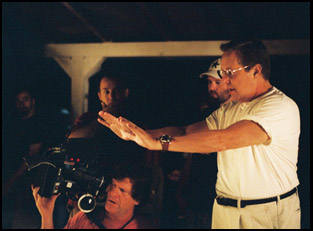
He was the toughest guy to work with, because he had done it on the stage and he had to completely rethink what he was doing for film. He couldn’t repeat his stage performance. And the play also went through a great many changes. He told me that there were eight different [versions] and then I confirmed it with Tracy Letts, there were eight different endings that they evolved through, and many different scenes. They used all of the earlier performances in London and Chicago and then when they got to New York, [Tracy] worked on the play all the time and then he worked on the film script and made changes.
Certainly, it’s the same story, the same characters, the same theme and the basic setting, and it’s close because I loved the play. It’s also like when I do an opera, I don’t want to change the opera. I just did “Aida,” which was written in 1871 and I had no impulse to change it, because it works. I just had to visualize it in my own way. And that’s how I approached “Bug.” I had to visualize it in my own way. There is, of course, all of the advantage of drawing the audience’s attention and focus to something on film that you can’t completely achieve on the stage, where the audience is deciding individually what they want to look at, and who. But again, my approach to that is I try not to do too much isolation and take away from the audience the notion that they can decide where to look.
Going back to the Austin screening that I went to of “The Hunted,” you spoke about how you had that moment with Johnny Cash, recording his intro for the film and you said the whole movie was worth it just for that one experience…
There’s no question about it. I mean, there are many high points in everyone’s life. People that you meet, even though briefly, you may never forget because of how they touched your life, and he’s certainly one of those. I can remember virtually every minute that I spent in his company and June’s and then how after breakfast, we went out to the back of their house to a little handmade wooden shed out in a pasture where he had just a folding chair and a microphone. His son was in a control booth that they had rigged up there behind the glass, and he recorded the song in one take. Then I asked him to do the Bob Dylan lyric that opens the film and he did that in one take. He clearly wasn’t well then, but a very spiritual character. It seemed to me that he was preparing for a journey then — that he wasn’t quite with us. But still a very warm and profound person, and I went into his office and he had all this literature, and he was reading not just various interpretations of the bible, but various versions of it. At that time, he had immersed himself in religious studies. He was very sincere about that. You hear a lot of singers singing so-called spirituals and you don’t necessarily get the feeling. But with him, he was deeply interested and involved, especially at that time, and a wonderful guy. I mark it as one of the high points and as I said, just being able to work with him on the opening titles was worth the whole movie to me.
Was there was an experience, perhaps not as profound as meeting Johnny Cash, but was there anything on this film, a moment where you just said, “Wow, this was worth it”?
All throughout. I was amazed at how the material played, how well these people played it and how much they brought to it completely on their own. At a certain point, I began to feel like a ringmaster at a circus who just brings all of the acts together and you wonder how these acts are going to gel because they’re all so different. And that was true of the cast. They’re all different sorts of people and then to put them together and see them take off on their own with what their feelings were about these characters was a marvelous experience. It’s what a director dreams about and lives for. Where you can just set the objects in motion and they stay up there with a kind of gravitational pull, and you don’t have to keep molding it or pushing it or shoving it around.
I reached that again [recently] with “Aida.” I got to a point where in the final week of rehearsal, I didn’t do or say anything. I was just a spectator. It had all worked so well. The four weeks that preceded it were very difficult to arrive at a staging. Then one day, up came the 110-piece orchestra and the 80-piece chorus and I saw it, and then the costumes started to get added and there it was, and I was just in awe of it. It made me think in ways that I never even thought when I started working in this business how a kind of magic or chemistry can occur through just putting certain things in motion in the right way and then, like a chef, letting the ingredients gel.
It just must be wonderful to have seen and done as much as you have and to still have that sense of discovery.
Yeah, I mean I never had it in the early days. “The French Connection” and “The Exorcist” were like pulling teeth, to the point where I never knew that they were going to even be successful, because they were so hard to bring off. And it seemed like I had to sail west to get east. But I must say a lot of that feeling [I have now] probably came about through my observation of Johnny Cash and how he had reached a point, having done what he did for so many years that he could just let it happen and it wasn’t forced. Even though he was sick and his voice wasn’t what it was, there was still profound meaning behind it. And it was a lesson. It was a life lesson and it was certainly helped me in directing various things. To be able to let it happen instead of trying to wring it out.




